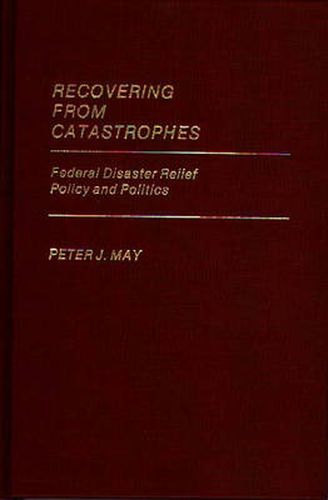Readings Newsletter
Become a Readings Member to make your shopping experience even easier.
Sign in or sign up for free!
You’re not far away from qualifying for FREE standard shipping within Australia
You’ve qualified for FREE standard shipping within Australia
The cart is loading…






This book examines the evolution of federal disaster relief policy, assesses problems with current policy, and provides an understanding of the issues likely to be involved in future deliberations about federal policy. While examining its formulation, May describes this policy making in two different political environments: the charged atmosphere immediately following the catastrophe and, secondly, the calm between catastrophes. Local, state, and federal government conflicts are illustrated in a case study of Mount St. Helens; intergovernmental partnerships in this arena are discussed in relation to other relief efforts. May stresses the political implications of disaster relief in his analysis of the electoral benefits and influence politicians derive from their attempts to influence federal disaster relief efforts. Finally he addresses the economic considerations and future directions for federal disaster relief policy. Three distinct policy approaches and their tradeoffs provide an overview of the options for future policy making.
$9.00 standard shipping within Australia
FREE standard shipping within Australia for orders over $100.00
Express & International shipping calculated at checkout
This book examines the evolution of federal disaster relief policy, assesses problems with current policy, and provides an understanding of the issues likely to be involved in future deliberations about federal policy. While examining its formulation, May describes this policy making in two different political environments: the charged atmosphere immediately following the catastrophe and, secondly, the calm between catastrophes. Local, state, and federal government conflicts are illustrated in a case study of Mount St. Helens; intergovernmental partnerships in this arena are discussed in relation to other relief efforts. May stresses the political implications of disaster relief in his analysis of the electoral benefits and influence politicians derive from their attempts to influence federal disaster relief efforts. Finally he addresses the economic considerations and future directions for federal disaster relief policy. Three distinct policy approaches and their tradeoffs provide an overview of the options for future policy making.